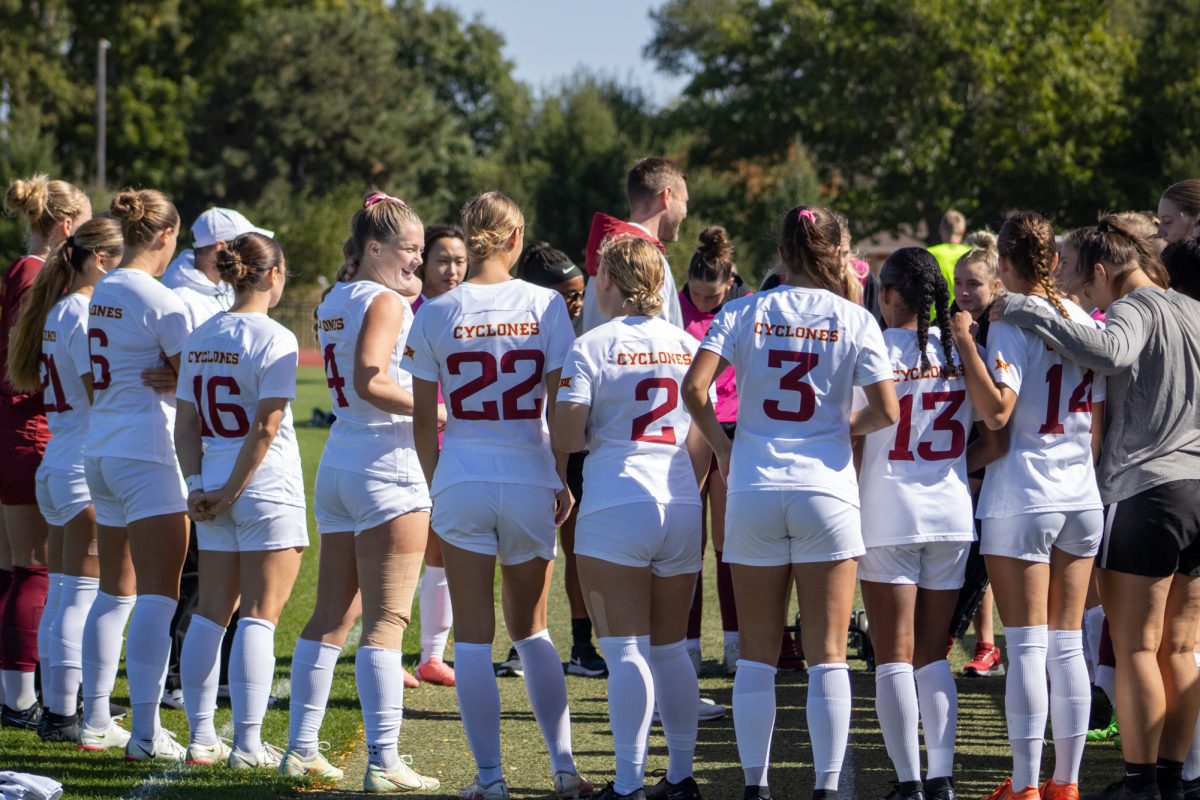Cashing in

A line of Cash4Clunkers cars sits on the lot of Willey Auto Group. Between dealerships in Ames and Nevada, Willey has accepted about 40 cars through the program. Photo: Laurel Scott/Iowa State Daily
August 22, 2009
As the Cash for Clunkers program officially draws to a close Monday, it leaves behind a significant number of unpaid rebates, as well as differing opinions on whether the program has successfully achieved its goals.
“The program has been, from a sales standpoint, very, very successful,” said Guy Willey, general manager of Willey Auto Group, which operates dealerships in Ames and Nevada. “We’ve done probably 40 Cash for Clunkers between our two stores.”
And the number would be higher if not for limited supply.
“If I had more inventory, I could sell more cars,” Willey said.
But administratively, the program has been somewhat of a “clunker” itself, with technical difficulties and delays in processing the paperwork generated by huge demand.
“So far the money has been very, very slow coming in,” Willey said. “I’m sitting here now with $150 to $200,000 that the government owes us.”
In order to apply for the rebates, dealers must navigate a government Web site and upload documents to prove that a trade-in qualifies.
Willey said during the start of the program, the Web site would crash before the dealership could send anything.
“It took us over a week to get our first documents actually submitted,” Willey said.
Once received, the participating buyer’s drivers license, purchase agreement, proof of ownership and title must be reviewed and approved. This task has been complicated by the fact that documents vary from state to state.
“You have 50 different states that title and register differently,” Willey said.
The result is that the program has taken much longer than anticipated to reimburse dealers, leaving many hoping to receive approval and payments for cars already sold and rebates already given.
Curt Benson, owner of Benson Motor in Ames, said he knew of several dealers who had written contingency clauses into their sales contracts, stating that if the Cash for Clunkers reimbursement request were to be denied, the customer would either have to return the car or pay the difference.
However, such contingency waivers have been denounced by the government body in charge of the program, the National Highway Traffic Safety Administration. So in the event of a denied application, dealers have little recourse – they must simply take the sale at a loss.
This has dealers concerned and was part of the reason that Benson Motor decided to not participate in Cash for Clunkers at all.
“I was just nervous as heck about the program,” Benson said. “There were so many questions that weren’t being answered.”
As the program ends, many questions remain, including whether or not Cash for Clunkers has succeeded in its stated goals.
In improving the gas mileage of cars on the road, the program’s success is most clear. Willey said that he’s noticed a strong improvement in customers’ mileage, with many people trading in older pickup trucks or sport utility vehicles in exchange for smaller cars like the Ford Focus.
But as economic stimulus, the measure of success is more complicated.
On a local level, the program has spurred dealers’ business. Willey estimated that because of the program, sales have been nearly twice as high as forecasted numbers.
Nationally, all three American automakers have boosted production following the Cash for Clunkers rollout.
But according to numbers released by the Department of Transportation, eight of the top 10 selling cars in the program are manufactured by foreign auto companies, meaning that Detroit might not be getting as big of a boost from the program as initially intended.
“I think Toyota was a big winner in the thing,” Benson said.
Cash for Clunkers has also affected the used car market, because The program mandates that clunker trade-ins be destroyed, even if they’re still road-worthy.
“Half [of the cars] that we’ve traded in could have gone back on the road,” Willey said.
With fewer used cars on the market, prices have risen.
“It’s getting hard to find a used car under $5,000 right now,” Willey said.
For low-income individuals in need of transportation, the increase in prices might become a problem.
“There’s not near as many of the real cheap older cars in the market for those people who, that’s what they can afford,” Benson said.
But Benson said he thinks that following the conclusion of Cash for Clunkers, the market will begin to move toward normalcy – just one more swing in what is an already-swung industry.
“It’s a crazy business, and it’s always a roller coaster ride,” Benson said.
Top Sellers
1. Toyota Corolla; 2. Honda Civic; 3. Ford Focus front-wheel drive; 4. Toyota Camry; 5. Hyundai Elantra; 6. Toyota Prius; 7. Nissan Versa; 8. Ford Escape front-wheel drive; 9. Honda Fit; 10. Honda CR-V four-wheel drive
Top Trade-ins
1. Ford Explorer four-wheel drive; 2. Ford F-150 Pickup; 3. Jeep Grand Cherokee; 4. Jeep Cherokee; 5. Ford Explorer two-wheel drive; 6. Dodge Caravan/Grand Caravan two-wheel drive; 7. Chevrolet Blazer four-wheel drive; 8. Ford F-150 pickup four-wheel drive; 9. Chevrolet C15000 pickup two-wheel drive; 10. Ford Windstar front-wheel drive van
— Information from The Associated Press






